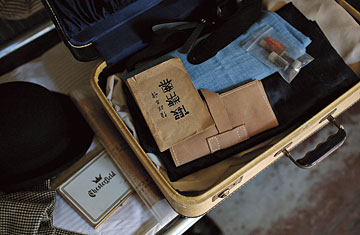
Preserved: Artifacts capture the poignancy of migrant life
From 1910 to 1940, a million immigrants seeking a better life in the U.S., most of them Chinese, were processed on Angel Island, a tiny dot of land in the San Francisco Bay, roughly 45 minutes from San Francisco. In 1970, the Angel Island Immigration Station was scheduled for demolition, but a California state park ranger named Alexander Weiss made a remarkable discovery: hand-carved fragments of Chinese poetry hiding under layers of graffiti and plaster in the walls of the derelict barracks. This find stopped the wrecking ball and began a decades-long campaign to turn the site into a museum memorializing one of the darker periods in American immigration. (See 10 things to do in San Francisco.)
After 1970, the ramshackle buildings were open to the public on a limited basis until the site was closed in 2005 for extensive refurbishments. On Feb. 15, the station will finally reopen its first phase to the public. Visitors can sit at a simulated interrogation table and take tours of cramped barracks that were segregated by race. New arrivals were detained for anywhere between two weeks and two years before being admitted into the U.S., or sent home. The Chinese encountered particular difficulty. As a consequence of the Chinese Exclusion Act, which severely curtailed Chinese immigration for more than six decades, Chinese detainees endured aggressive and lengthy questioning, intense suspicion and outright racism. Though most were eventually admitted into the country, the wait was tortuous, driving some to take their own lives.
The welcome was much warmer at Angel Island's East Coast counterpart, the fabled Ellis Island, where European immigrants were processed within hours. "Whenever people talk about American immigration, they talk about Ellis Island," says exhibit designer Daniel Quan, whose own father passed through Angel Island in 1926. "The country has not celebrated immigration on an equal basis for everyone."
Visitors to Angel Island will be able to see some of the 200 Chinese poems that were painstakingly carved into the wooden walls, and listen to Cantonese and English recordings of the fraught verses. "Don't say that everything within is Western-style," wrote one detainee. "Even if it is built of jade, it has turned into a cage." Added another: "Imprisoned in the wooden building day after day/ My freedom is withheld; how can I bear to talk about it?/ I look to see who is happy but they only sit quietly."
They're not so quiet anymore. In this preserved space, the walls speak out for hundreds of thousands of Chinese, landing in what they thought of as a haven of opportunity only to meet with indifference, condescension and incarceration.
Guided tours cost $7. For more information, visit www.aiisf.org.
